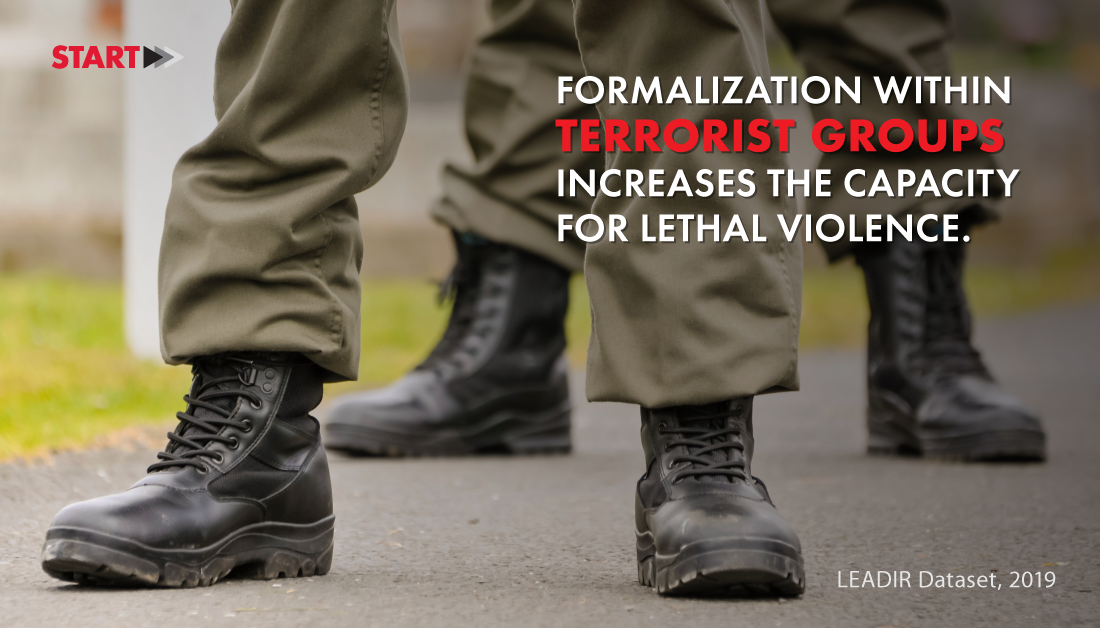Formalization within a terrorist group increases its capacity for lethal violence, according to a new START analysis of the Leadership of the Extreme and Dangerous for Innovative Results (LEADIR) dataset. The research team found that terrorist groups that use uniforms to denote status differences and tenure are more lethal than groups whose members do not wear uniforms.
LEADIR, which includes 280 violent extremist organizations and 295 violent extremist leaders active between 2008 and 2017, uses an internal strategic organizational approach to examine the leadership, organizational structure and indicators of innovation. The data can be used to provide insight into which violent extremist organizations and leaders will emerge as the most strategically differentiated in the coming years. 
Led by Gina Ligon, director of the National Counterterrorism Innovation, Technology and Education (NCITE) Center of Excellence, the research team determined several generalizations that can help predict indicators of malevolence and heightened threat of future terrorist organizations. Organizational complexity was significantly linked to the number of attacks on hard targets and the number of highly successful attacks on hard targets. This suggests that, as organizations adopt a more sophisticated organizational design, their willingness and success in attacking hard targets increases.
Organizational size was also significantly related to all five attack outcomes assessed by LEADIR: lethality, lethality on hard targets, number of attacks on hard targets, number of successful attacks on hard targets and the number of highly successful attacks on hard targets. This suggests that organizational size is an important predictor of violence at the group level, a finding that has emerged across terrorism datasets showing its consistency as a group-level construct.
In an examination of nearly 300 violent extremist leaders, the LEADIR research team found that:
- the average age at which leaders rose to power was 43 years old,
- approximately 79 percent of leaders have operational influence over the organization,
- 44 percent have strategic influence, and
- 34 percent have both strategic and operational influence over the organization.
Of those group leaders who were removed from power, the most common means were through decapitation via rivals or government forces (17%) or through arrest (10%).
Founded and based at the University of Nebraska Omaha, LEADIR has been federally funded and used by the Department of Defense and the Department of Homeland Security since 2010.
Read the Leadership of the Extreme And Dangerous for Innovative Results research brief for more information.
